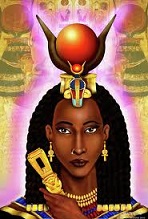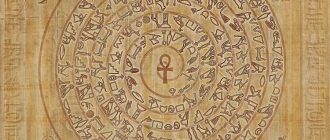Intrigued by the Egyptian goddess Hathor? Read on to learn more about the Hathor Egyptian goddess whose cult center originates from Dendera to spread across Egypt…
The lady of the heavens or the Egyptian goddess Hathor has a cult center focused out of Dendera in Egypt and spread throughout the country. Since she has been prevalent from the pre-dynastic era, Hathor the Egyptian goddess is symbolized by many different goddesses.
Considered to be the Goddess of the sky, she is depicted as the symbolic deity who represents the moon and sun along with the sky spanning the East and West. Apart from this her association with the sky is translated in her depiction as the moisture goddess, the goddess of fertility and agriculture along with having powers for the underworld.
Attributes of the Egyptian Goddess Hathor
As the goddess of fertility she was the patron for women across Egypt no matter if they were of humble origins or belonged to the powerful and elite class. She signified motherhood, happiness and the purity of love. Her benevolence was bestowed on expectant women as well as the midwives who were responsible for assisting in childbirth. She was also considered the goddess of music and dance.
As a fertility goddess and the moisture goddess she was linked to the flooding of the Nile River and propagating the land with rich and fertile soil. She was considered linked to the Dog Star which rose over the Nile and conceptualized the flooding of the Nile River on an annual basis. She is also associated with Ra the supreme God and is considered the eye of Ra in the legend representing both of them.
The Egyptian Goddess Hathor in Different Forms
She is considered the daughter of Nut and Ra as well as the wife of Ra and the mother of Ihy. There are quite a few legends which depict her as the mother of Horus – The Elder and a few which speak of her as the spouse of Horus of Edfu thereby making her the mother of Horus The Younger.
She was worshiped as a cow with many stars on her head signifying the combination of the dog Star; as the protector of dead women and at the start which caused the flooding of the River Nile. Apart from this she is also shown as the body of a cow with a human head having the horns and ears of the cow.
If she is depicted as a woman then she bears a headdress which has a pair of cow horns and the moon disk suspended in the center. As the goddess of fertility for the Nile she is shown as a cow standing on a boat which is encircled with papyrus reeds.
Evolving Role of the Egyptian Goddess Hathor
Osiris was considered the God of the dead and when his cult became extremely popular it led to a shift in the representation of the Egyptian goddess Hathor. She was now the goddess of the underworld and welcomed the deceased who arrived into their graves by providing them water and nourishing them with food.
Her representation as a cow is actually synonymous with her status as goddess of the underworld whereby she suckles the souls of the dead people and gives them nourishment while they are being mummified. Furthermore she protects them during their journey to the other world and the transference of their soul is made easier under her patronage. With the establishment of Osiris as the God of the dead, more and more males identified with them whereas during the Late Period of Egyptian history Hathor the Egyptian goddess became synonymous with dead women and their protection.





